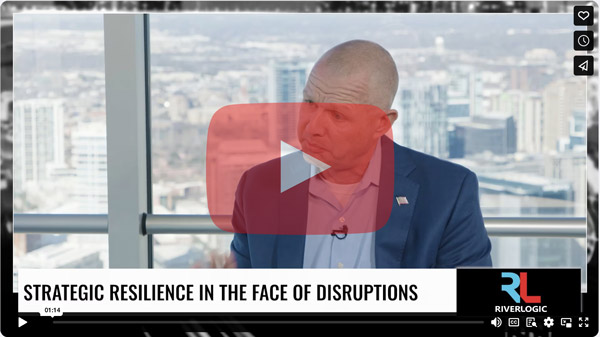Author: Nathan Goldstein
In a recent Real Talks session featuring Peter Mawet from Accenture, the discussion on supply chain resilience prompted a compelling analogy invoking Mike Tyson’s famous quote: “Everybody has a plan until you get punched in the face.” While Tyson’s words were crafted for the boxing ring, their resonance extends profoundly into supply chain strategy, particularly into risk mitigation and business continuity planning. As Mawet noted, in the fast-paced world of supply chains, unexpected disruptions can feel like a sudden punch in the face, disrupting even the most meticulously laid plans. Here is where the significance of business continuity planning shines through.
Imagine your supply chain as a skilled boxer entering the ring, confidently executing its strategies until confronted with the unexpected—the proverbial punch in the face. Suddenly, the situation demands swift assessment and strategic maneuvering. How severe is the punch? Is it merely a stumble or a potentially devastating knockout?
This analogy encapsulates the essence of business continuity planning in the supply chain. It’s about readiness for the unforeseen, armed with strategies to soften the impact of disruptions. Just as a boxer anticipates and prepares for incoming punches, businesses must anticipate and prepare for potential disruptions in their supply chains.
Why Traditional Network Design Approaches Fall Short in Supply Chain Risk Management
Conventional network design tools often incorporate risk into their supply chain modeling capabilities. However, they often fall short, focusing solely on operational aspects, overlooking the financial impacts and other critical areas such as supplier risk and sustainability.
Before relying on this fragmented analysis, ask yourself: Are the risk scenarios granular enough to understand the impacts or stay at the abstract high level? Do they consider the end-to-end value chain, or are they focused exclusively on the operations and logistics side of the business? Can you include your unique constraints, or are you forced to assess the risk using pre-configured templates and averages? Last but not least, do the risk scenarios you are getting include detailed plans to minimize the financial impact of disruptions?
The Modern Approach to Business Continuity Planning
River Logic thoroughly evaluates the entire value chain, allowing businesses to model changes in supply or demand and analyze the financial implications of these changes. Businesses can quantify the delta by comparing optimal and suboptimal scenarios and make informed decisions about resource allocation and risk mitigation strategies.
By employing both predictive and prescriptive analytical approaches, River Logic enables supply chain executives to gain profound insights into every facet of their business. With this capability, leaders can precisely define specific input variables, such as demand, supply lead times, manufacturing throughput rates, and costs, treating them as stochastic variables rather than discrete assumptions. This approach is combined with optimized responses spanning the range of distribution. Consequently, we discover that while the potential outcomes may be broad, River Logic identifies narrower bands or tipping points where optimization suggests implementing something different in response.
Conclusion
In conclusion, as Mike Tyson adapted and responded to unexpected challenges in the boxing ring, businesses must be agile and proactive in addressing supply chain disruptions. Companies can confidently enhance their resilience and navigate through adversity by embracing robust business continuity planning strategies and harnessing advanced analytical solutions like River Logic. In today’s dynamic business landscape, everyone may have a plan—but the ability to adapt when faced with adversity truly sets organizations apart.




